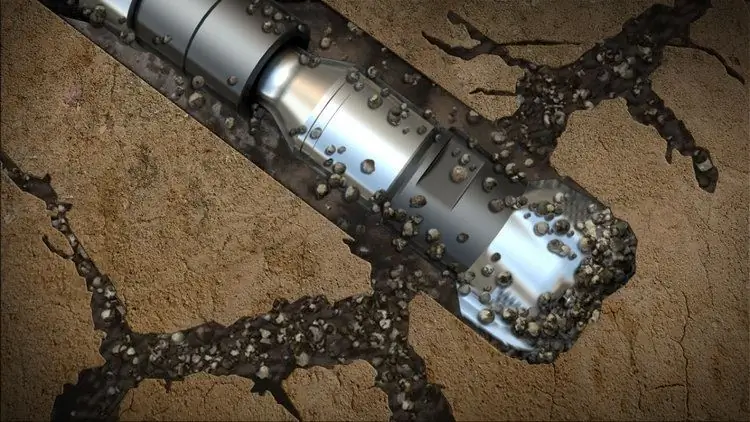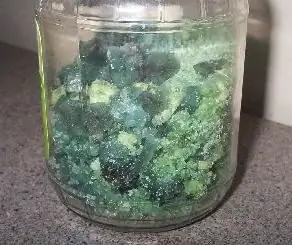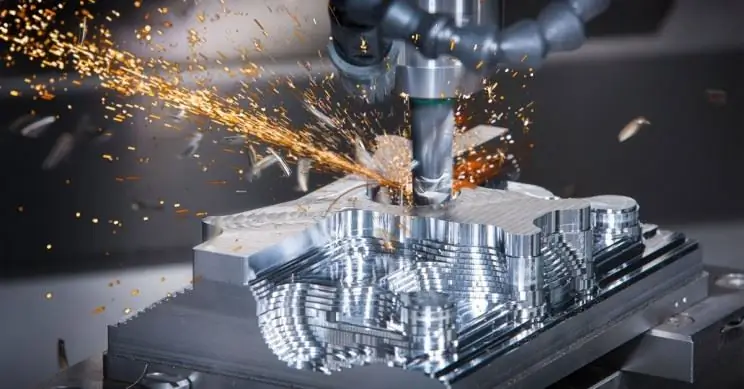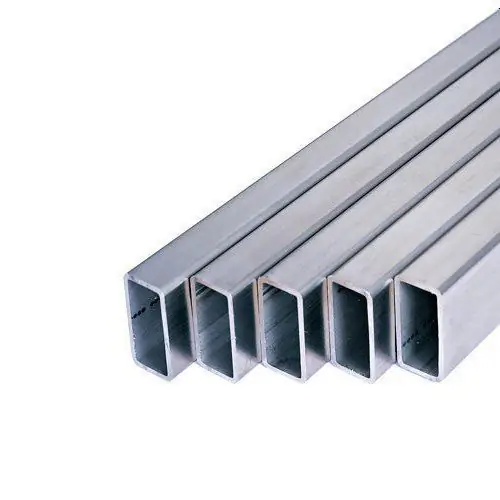2025 Author: Howard Calhoun | [email protected]. Last modified: 2025-01-24 13:10:31
Methyl bromide is a fumigant used against a wide range of pests including spiders, mites, fungi, plants, insects and rodents. Introduced as a pesticide in 1932. Methyl bromide fumigation is used to fumigate agricultural products, grain silos, mills, ships, clothing, furniture and greenhouses.
Physical properties
Methyl bromide is a colorless gas or volatile liquid that is generally odorless. In high concentrations, it may smell like chloroform. It is not spontaneously combustible, but is hazardous when exposed to sparks or flames. At increased pressure or at temperatures below 3˚C, methyl bromide takes on the state of a liquefied gas. It has a boiling point of 38.5˚C and does not ignite in air. Contains chloropicrin.

Reaction to other substances
Methyl bromide poses a serious explosion hazard when combined with aluminium, magnesium or zinc. Delayed explosions can occur in the presence of dimethyl sulfoxide. A vigorous reaction occurs when mixed with strong oxidizers or ethylene oxide. The use of ethyl bromide is currently being phased out due to its ability to deplete the ozone layer.
Origin
Produced naturally and synthetically. The main sources of methyl bromide in the environment are the oceans, biomass burning and fumigation use. For the agricultural industry, it is made by reacting the combination of methanol with hydrogen bromide.
How does it work?
Gas fills the air spaces in enclosed spaces, penetrates into cracks and pores in the soil. Effective processing requires a certain concentration and optimal use of methyl bromide.

Sources
In the atmosphere, the level of this gas is less than 0.025 parts per billion (ppd). Industrial areas have higher levels due to emissions from chemical plants.
Workers who fumigate homes and fields can be exposed to high concentrations of methyl bromide if proper safety practices are not followed.
Insignificant gas content found in drinking water. Some methyl bromide is formed by ocean algae.

Use
Gas is a broad spectrum pesticide mainly used for soil fumigation, commercial or quarantine treatment and structural fumigation. It is also an intermediate in the manufacture of other chemicals.
In 2000, 71,500 tons of synthetic methyl bromide were used annually worldwide. About 97% was for the purpose of fumigation, 3% was used for the manufacture of other products. In addition, 75% of consumption was in developed countries. Asia and the Middle East combined used 24%. Latin America and Africa had the lowest percentage at 9%.

Methyl bromide use
In commercial large-scale monoculture seed production, it is vital to avoid contamination of crops with seeds of the same species but of a different type. Therefore selective herbicides cannot be used. In this case, methyl bromide treatment is much safer and more effective than other soil sterilizers.
In the past, this fumigant was used as a cooling agent in fire extinguishers. It is also used in the manufacture of other chemicals.
Methyl bromide is used to prepare golf courses. Farmers use it to till the soil to kill nematodes, fungi and weeds.

For soil fumigation, methyl bromide is injected directly into the soil, which is then covered with tarps. The tarp is sealed, kept in place for a few days, and then removed. This fumigation improves the quality of crops and increases yields.
The main crops grown on cultivated soils are peppers, strawberries, tomatoes andgrapes.
Inhalation exposure to rodents harms not only adults, but also future generations, preventing normal reproduction.

Fumigation of goods
Methyl bromide is widely used for fumigation of post-harvest commodities including wheat, cereals, spices, nuts, dried fruits. This treatment helps to eradicate pest infestation. Fumigation is carried out in all rooms where products are stored. Commercial fumigation usually involves the use of specially designed and installed chambers into which methyl bromide is released.
After processing, the products are continuously ventilated using mechanical ventilation until the gas concentration reaches a safe level. Another type of commodity fumigation involves sealing the commodity under a tarp, followed by the introduction of methyl bromide. Ventilation is carried out after the tarp is removed.

Fumigation of premises
All types of commercial and residential properties can be treated with methyl bromide to control and kill pests. They are covered with a "tent" or tarpaulin filled with gas. After a certain period, the material is removed. Rooms are thoroughly ventilated until the concentration of methyl bromide reaches normal levels.
Stay safe
All persons working with gas must be aware of its hazards and trained in the use of personal protective equipment. Workers and other people in the areafumigation must be equipped with special equipment. If the concentration of methyl bromide in the work area exceeds the established safety standards, then all persons in the fumigated area must wear a self-contained breathing apparatus.
Warning signs must be posted at all entrances to this area. No one is allowed into the premises without personal protective equipment. Individuals living in close proximity to fumigated fields, greenhouses, and facilities are unlikely to be exposed to unsafe levels of methyl bromide due to application restrictions and rapid dispersion of the gas into the atmosphere.

Danger for people
At this point, scientists have studied in detail the nature of the toxic effect of methyl bromide on humans. Inhalation of high concentrations of gas can cause pulmonary edema and impair respiratory function. Acute inhalation of methyl bromide often leads to neurological consequences. These could be:
- headaches and dizziness;
- fainting, apathy and weakness;
- confusion and speech disorder;
- visual effects;
- numbness, twitching and tremor;
- in severe cases, convulsions and paralysis are possible.
The gas irritates the eyes, skin and mucous membranes of the upper respiratory tract. May cause itching, redness and blisters. In some cases, kidney and liver damage has been observed.
Recommended:
Cement slurry: properties, preparation rules, composition, compliance with GOST requirements, purpose and application

During the drilling process, special solutions are used to flush out cuttings and products from the development of local rock. This operation is necessary to increase the efficiency of the mechanical impact of the drilling rig and to clear the bottom hole. Washing out is carried out using cement slurries, which are prepared using special technologies
Ferrous sulfate: physical and chemical properties, production, application

Ferrous sulfate is a chemical compound that is extremely common in nature and widely used in various fields of economic activity. There are divalent and trivalent modifications of this substance. The first variety, also called ferrous sulfate, is an inorganic binary non-volatile compound having the formula FeSO4
Titanium carbide: production, composition, purpose, properties and applications

Titanium carbide: the history of the discovery of this compound, chemical and physical and mechanical properties. Description of how to obtain it. Part coating, carbide steel fabrication and other titanium carbide applications
Duralumin is a high-strength aluminum-based alloy with additions of copper, magnesium and manganese: properties, production and application

What is duralumin? What are the features of duralumin alloy? Technical and quality indicators of the alloy. A variety of products from this metal and their scope
Hypoeutectoid steel: structure, properties, production and application

The article is devoted to hypoeutectoid steels. The properties and structure of the material, the features of its manufacture, etc. are considered

